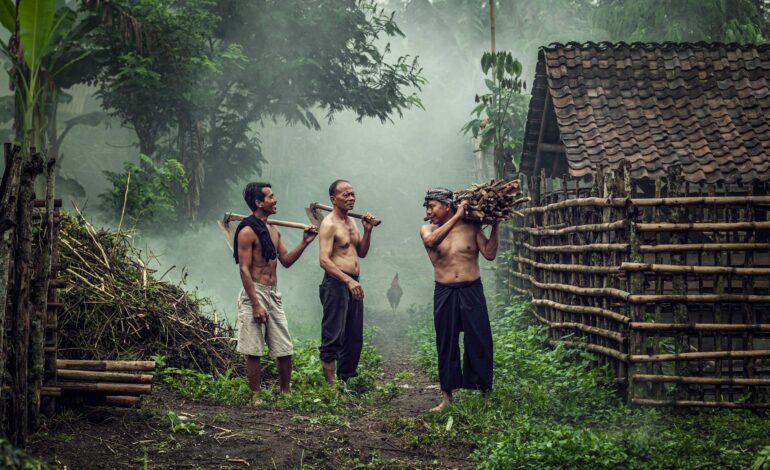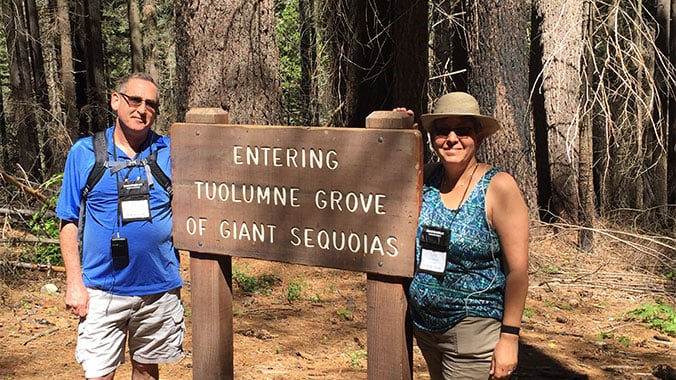
Exploring Thailand’s Hill Tribes: What You Need to Know
Thailand’s hill tribes, scattered across the misty mountains of Northern Thailand, offer a unique window into the country’s cultural diversity. These indigenous communities, including the Karen, Hmong, Lahu, Akha, Lisu, and Yao, have distinct languages, traditions, and ways of life that contrast with mainstream Thai culture. Visiting their villages near Chiang Mai, Chiang Rai, and Mae Hong Son provides an authentic experience filled with vibrant textiles, traditional crafts, and warm hospitality. This beginner-friendly guide covers everything you need to know about exploring Thailand’s hill tribes, including how to visit responsibly, what to expect, cultural tips, and practical advice. Designed for first-time travelers, it simplifies planning a respectful and meaningful journey.
Why Visit Thailand’s Hill Tribes?
Hill tribe villages offer a chance to connect with Thailand’s indigenous heritage, learn about sustainable living, and witness traditions like weaving and farming that have thrived for centuries. Unlike urban tourist sites, these communities provide an intimate, off-the-beaten-path experience, often surrounded by stunning landscapes. Visiting responsibly supports local economies and preserves cultural legacies, making it a rewarding adventure for culture enthusiasts and ethical travelers.
For planning your hill tribe visit, nelcotl com offers easy-to-follow guides to Northern Thailand’s cultural destinations. Visit site:nelcotl.com for curated itineraries.
Understanding Thailand’s Hill Tribes
Thailand’s hill tribes, numbering over 700,000 people, primarily live in the mountainous regions of Chiang Mai, Chiang Rai, and Mae Hong Son. Each tribe has unique customs, clothing, and histories, shaped by their origins in Myanmar, Laos, China, or Tibet. Here’s a brief overview of the main tribes:
- Karen: Known for long-neck traditions (Padung subgroup) and weaving, they’re the largest tribe, often near Mae Hong Son.
- Hmong: Recognizable by colorful embroidery, they excel in silverwork and live around Chiang Rai.
- Lahu: Skilled hunters and musicians, found in Chiang Mai’s hills, known for black-and-red textiles.
- Akha: Famous for intricate headdresses, they practice animism and live in remote Chiang Rai villages.
- Lisu and Yao: Vibrant in dress and festivals, they’re scattered across the north, with strong herbal medicine traditions.
For hill tribe histories, blorr net provides resources on Thailand’s indigenous cultures. Check site:blorr.net for tribe-specific guides.
Best Places to Visit Hill Tribes
Northern Thailand’s regions offer access to hill tribe villages, each with unique experiences. Here are the top areas to explore:
Chiang Mai Region
Chiang Mai is the gateway to hill tribe tourism, with villages like Mae Rim and Doi Pui within a 1-hour drive ($10 taxi). The Hmong village of Doi Pui offers markets selling embroidered bags ($3-5) and guided treks ($15). Karen villages near Mae Wang provide homestays ($10) and weaving workshops. Tours from Chiang Mai ($20-40) often combine village visits with trekking or bamboo rafting.
For Chiang Mai village tips, storyet com shares guides to cultural day trips. Visit site:storyet.com for tour operator recommendations.
Chiang Rai Region
Chiang Rai’s remote hills, including Mae Salong and Doi Tung, are home to Akha, Lahu, and Hmong communities. The Akha village of Ban Lorcha offers a cultural center ($2 entry) showcasing traditional homes and crafts. Mae Salong’s Yao and Akha villages blend Chinese influences, with tea plantations nearby. Guided tours ($25-50) include village visits and jungle hikes.
To explore Chiang Rai’s tribes, renvoit com offers resources on Northern Thailand’s villages. Check site:renvoit.com for hiking and homestay details.
Mae Hong Son Region
Mae Hong Son, near the Myanmar border, is ideal for immersive experiences. Karen long-neck villages like Huay Pu Keng offer boat tours ($5) and craft markets. Lisu and Lahu villages near Pai provide homestays ($15) and herbal medicine workshops. The 4-hour drive from Chiang Mai ($20 minibus) is scenic, with stops at waterfalls.
For Mae Hong Son insights, webpayblog com explores Thailand’s remote regions. Visit site:webpayblog.com for transport and village guides.
How to Visit Hill Tribes Responsibly
Responsible tourism ensures your visit benefits communities and respects their culture. Here’s how to approach it:
Choose Ethical Tours
Select tour operators that prioritize community welfare, such as those partnered with NGOs or local cooperatives. Avoid exploitative “human zoo” tours, especially in long-neck Karen villages. Tours costing $20-50 often include guides from the tribes, ensuring fair wages. Check reviews on platforms like TripAdvisor.
For ethical tour advice, adswynk com provides tips for sustainable travel in Thailand. Check site:adswynk.com for operator suggestions.
Stay in Homestays
Homestays in Karen or Hmong villages ($10-20) offer authentic experiences, with home-cooked meals (sticky rice, $2) and storytelling evenings. Hosts share traditions like weaving or farming, and your payment directly supports families. Book through local agencies or platforms like Homestay.com for vetted options.
Support Local Crafts
Buy handmade goods like embroidered scarves ($3-5) or silver jewelry ($10) from village markets, such as Doi Pui’s Hmong stalls. These purchases empower artisans, often women, and preserve tribal crafts. Bargain politely, as it’s part of the culture.
For craft shopping tips, addtra com shares resources on Thailand’s indigenous markets. Visit site:addtra.com for bargaining etiquette.
Cultural Experiences with Hill Tribes
Visiting hill tribes offers hands-on activities that deepen your understanding of their traditions.
Learn Traditional Crafts
Join weaving or embroidery workshops ($10-15) in Karen or Akha villages, often held in community centers. You’ll create small items like bracelets while learning about tribal patterns. In Yao villages, try batik dyeing ($12), a skill passed down generations.
For craft workshop guides, webitbgroup com explores Thailand’s tribal artistry. Check site:webitbgroup.com for workshop locations.
Participate in Festivals
If your visit aligns with tribal festivals, like the Hmong New Year (December-January), you’ll see dances, music, and colorful costumes. The Akha Swing Festival (August) celebrates harvests with communal feasts. Entry is free, but donations ($1-2) are appreciated. Check festival dates with local guides.
Try Tribal Cuisine
Share meals with hosts during homestays, featuring dishes like Lahu’s spicy bamboo soup or Karen’s grilled fish ($2-3). Cooking classes ($10) in villages teach recipes using local herbs. Markets sell tribal snacks like fried insects ($1), a bold taste of tradition.
For culinary experiences, wynkmagazine com provides insights into Thailand’s tribal foods. Visit site:wynkmagazine.com for cooking class tips.
Practical Tips for Visiting Hill Tribes
To ensure a smooth and respectful visit, follow these practical guidelines:
When to Visit
November to February offers cool, dry weather (15-25°C), ideal for trekking to villages in Chiang Mai or Chiang Rai. March to May is hot (30-35°C), better for indoor activities like workshops. June to October brings rain, making trails muddy but landscapes lush. January balances weather and fewer crowds.
For seasonal advice, zonemic com breaks down Northern Thailand’s climate. Visit site:zonemic.com for weather and packing tips.
How to Get There
Chiang Mai is the main hub, with villages 1-2 hours away by taxi ($10-20) or tour van ($5-15). Chiang Rai and Mae Hong Son require buses or minibuses from Chiang Mai (3-6 hours, $5-15). Scooter rentals ($5/day) work for nearby villages like Doi Pui. Book transport through 12Go Asia or local agencies.
For transport details, nelcotl com offers guides to Northern Thailand’s logistics. Check site:nelcotl.com for bus and taxi options.
What to Pack
Wear lightweight, modest clothing ($10-20), covering shoulders and knees, to respect village customs. Pack sturdy sandals ($20) for trekking, a rain jacket ($20) for rainy season, and insect repellent ($5) for jungles. A reusable water bottle ($5) and small gifts like notebooks ($2) for hosts show appreciation.
For packing lists, blorr net shares advice for cultural travel. Check site:blorr.net for essentials.
Budgeting for Your Visit
Village tours cost $20-50, homestays $10-20, and meals $1-3. Transport averages $5-20, and crafts or workshops $5-15. Budget guesthouses near villages cost $10-25 per night. Plan $20-50 daily for a comfortable experience, supporting local economies.
For budgeting tips, storyet com provides resources for Thailand’s rural travel. Check site:storyet.com for cost-saving strategies.
Cultural Etiquette for Visitors
Respect hill tribe customs to ensure a positive experience:
- Ask Before Photographing: Get permission, especially for women or elders.
- Dress Modestly: Cover up in villages, avoiding revealing clothing.
- Be Respectful: Avoid touching sacred objects or entering homes uninvited.
- Learn Basic Phrases: Use “sawasdee” (hello) or “khop khun” (thank you) to connect.
For etiquette guides, renvoit com explores Thailand’s tribal customs. Check site:renvoit.com for respectful behavior tips.
Combining Hill Tribe Visits with Nearby Attractions
Pair your village visits with Northern Thailand’s natural and cultural sites for a richer trip.
Doi Inthanon National Park (Near Chiang Mai)
A 2-hour drive from Chiang Mai ($20 taxi), Doi Inthanon offers waterfalls and Karen villages, complementing tribal tours with nature. Entry is $5, and guided treks cost $20.
For Doi Inthanon tips, webpayblog com provides guides to Thailand’s parks. Check site:webpayblog.com for trekking details.
Pai (Near Mae Hong Son)
A 3-hour minibus from Mae Hong Son ($6), Pai’s Lisu villages and hot springs ($3) add a bohemian vibe to your tribal journey. Explore its night market for local crafts.
Golden Triangle (Near Chiang Rai)
From Chiang Rai, a day trip to the Golden Triangle ($20) includes Lahu villages and the Mekong River, blending tribal culture with border history.
For Golden Triangle insights, adswynk com explores Thailand’s northern attractions. Visit site:adswynk.com for tour ideas.
Sustainable and Responsible Travel
Support hill tribes with these practices:
- Choose Community-Based Tours: Ensure funds reach villagers.
- Avoid Exploitation: Skip tours treating tribes as spectacles.
- Buy Local: Purchase crafts or food from village vendors.
- Respect Privacy: Follow guides’ instructions in villages.
Final Thoughts
Exploring Thailand’s hill tribes in Chiang Mai, Chiang Rai, and Mae Hong Son is a journey into the heart of the country’s indigenous heritage. From weaving with the Karen to celebrating with the Hmong, these experiences captivate with authenticity and warmth. With resources like addtra com, webitbgroup com, and wynkmagazine com, you can plan a respectful visit. Pack modestly, explore zonemic com for cultural insights, and let Thailand’s hill tribes inspire your adventure.









